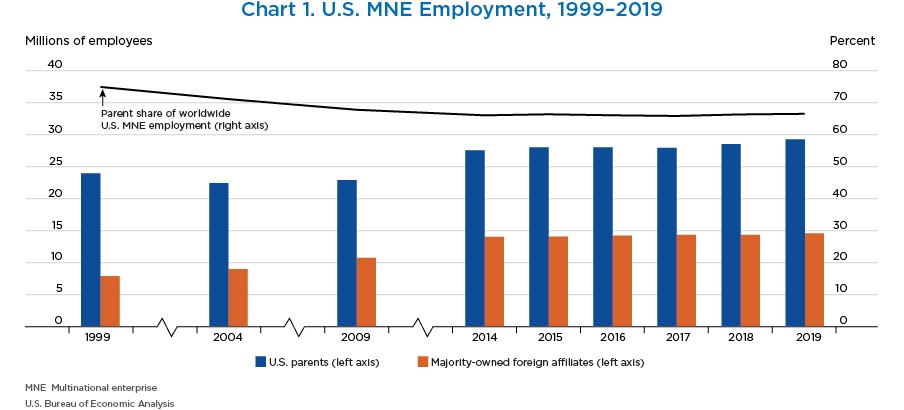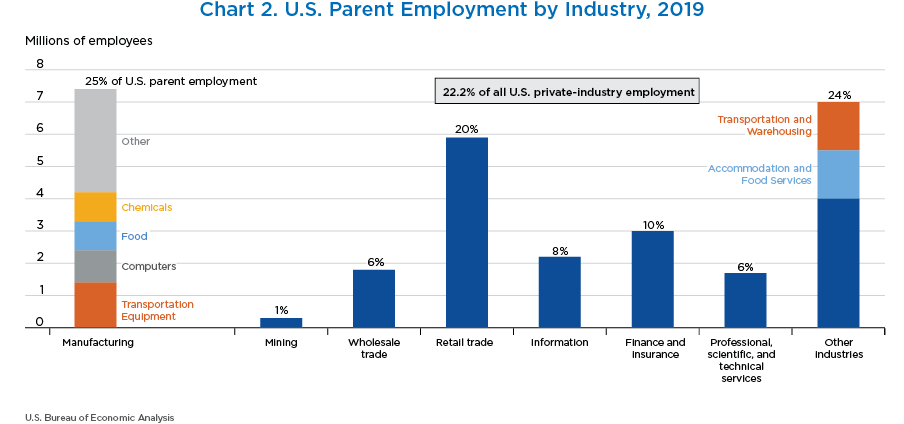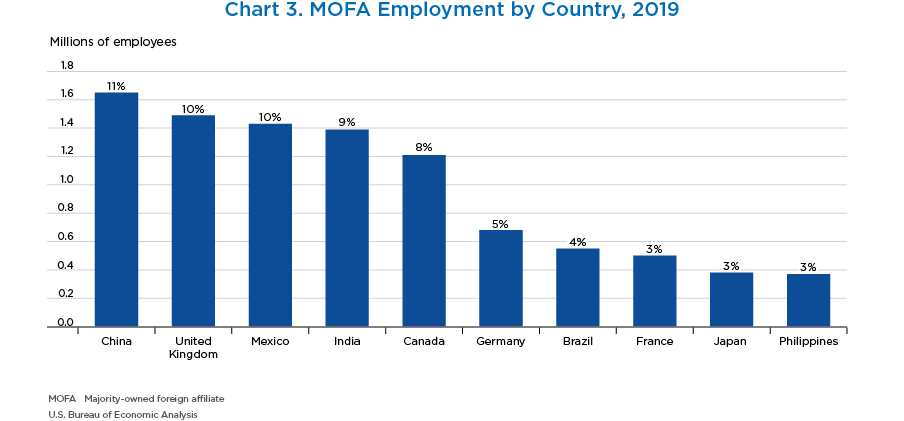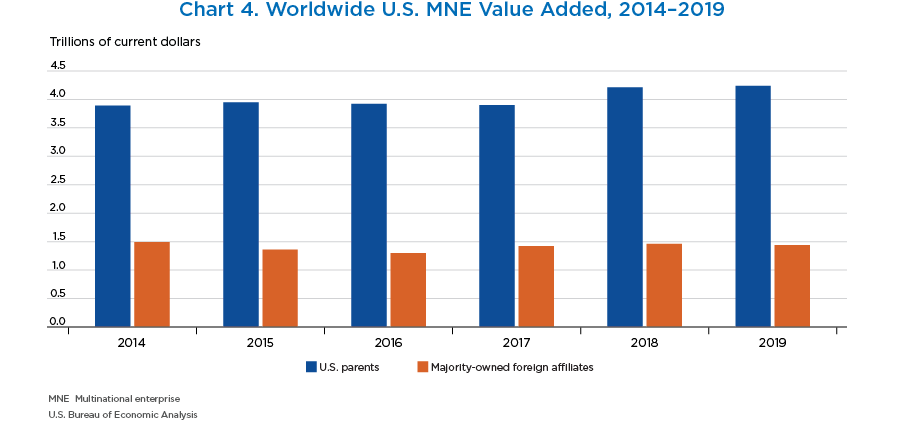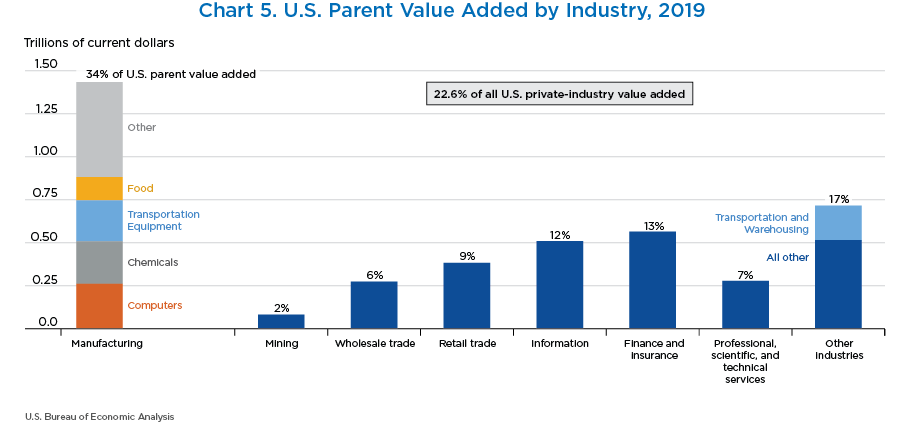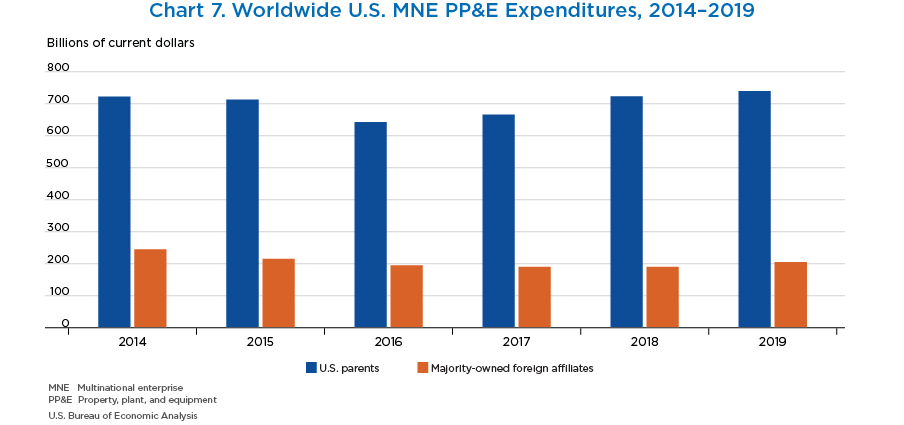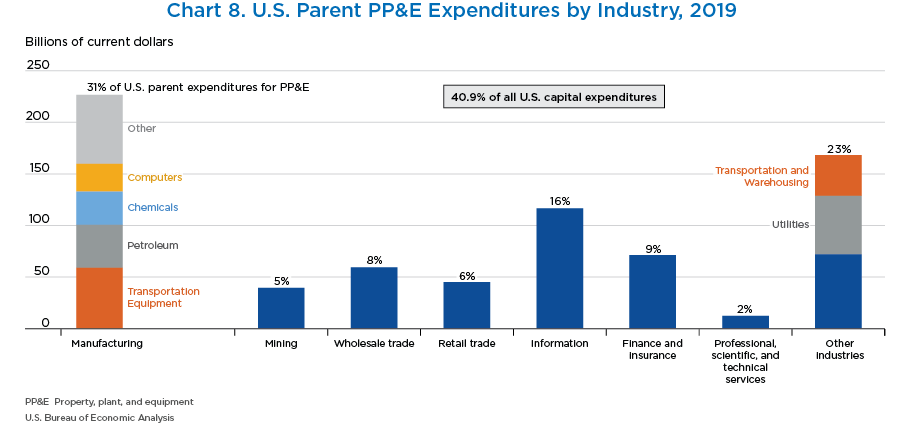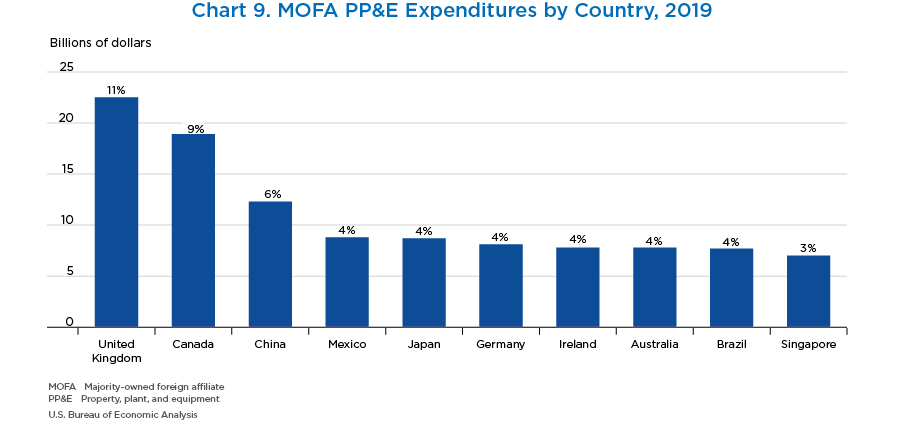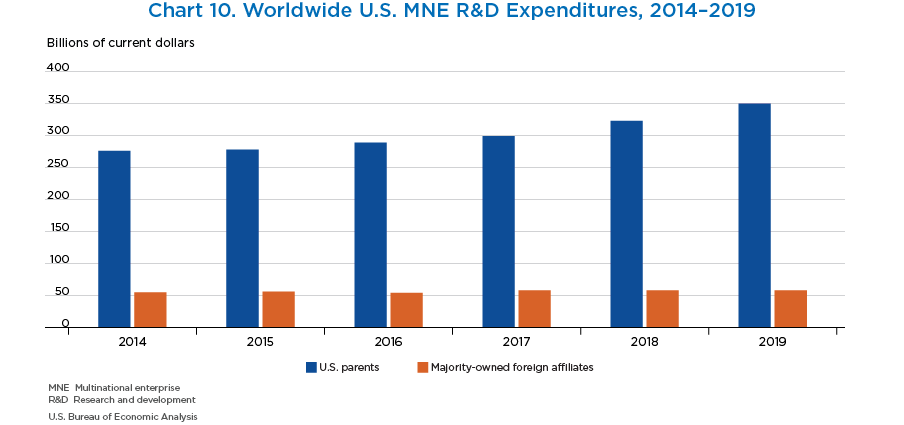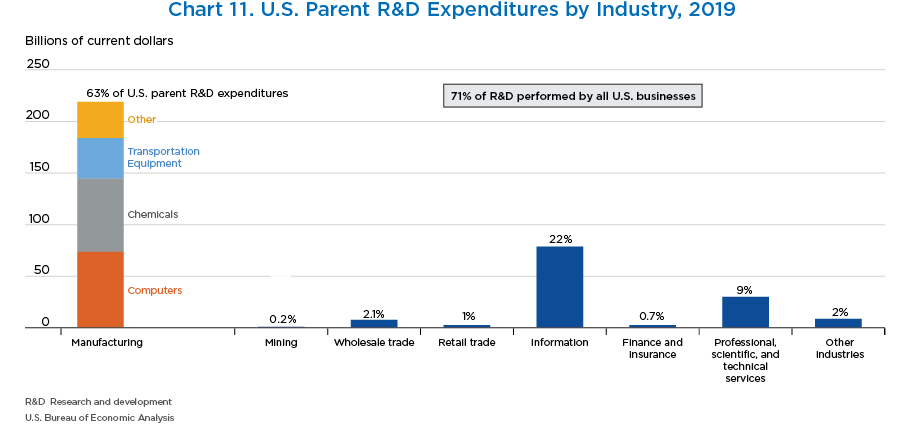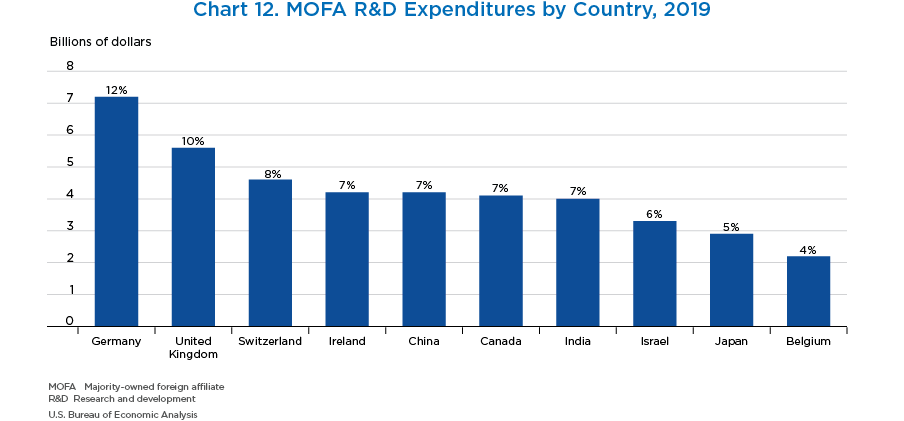Activities of U.S. Multinational Enterprises in 2019
The Bureau of Economic Analysis (BEA) recently released statistics on the activities of U.S. multinational enterprises (MNEs) in 2019. These statistics provide a picture of the overall activities of U.S. parent companies and their foreign affiliates and contain a wide variety of indicators of their financial structure and operations. The statistics cover items that are needed to analyze the characteristics, performance, and economic impact of U.S. MNEs on the U.S. and foreign economies and are obtained from mandatory surveys of U.S. MNEs conducted by BEA.
The following charts present highlights of BEA U.S. MNE statistics for 2019. Much more detail, including additional data items, can be found on the BEA website.
- Worldwide employment by U.S. MNEs increased 2.4 percent to 43.9 million workers in 2019. Employment in the United States by U.S. parents increased 2.7 percent to 29.3 million workers, while employment abroad by majority-owned foreign affiliates (MOFAs) increased 1.8 percent to 14.6 million workers.
- U.S. parent employment accounted for 66.7 percent of worldwide employment by U.S. MNEs, while MOFA employment accounted for 33.3 percent. The U.S. parent share of employment increased in both 2018 and 2019, reversing a 20-year trend of decreasing U.S. employment shares by U.S. MNEs.
- U.S. parents accounted for 22.2 percent of all U.S. private-industry employment.
- The manufacturing sector accounted for 25 percent of U.S. parent employment. Within manufacturing, transportation equipment employed the most workers, followed by computers and electronic products. Retail trade accounted for 20 percent of U.S. parent employment.
- Within other industries, accommodation and food services, along with transportation and warehousing, employed the most workers.
- The five countries with the largest MOFA employment were China, the United Kingdom, Mexico, India, and Canada. Together, these five countries accounted for nearly half of all MOFA employment.
- In China, the United Kingdom, and Mexico, the largest industry was manufacturing.
- Current-dollar value added of U.S. parents, a measure of their direct contribution to U.S. gross domestic product, increased 0.5 percent to $4.2 trillion. The industry with the largest increase was wholesale trade.
- MOFA current-dollar value added decreased by 1.5 percent to $1.4 trillion. The largest decrease was in the mining industry.
- U.S. parents accounted for 75 percent of worldwide value added by U.S. MNEs, while MOFAs accounted for the remaining 25 percent.
- U.S. parents accounted for 22.6 percent of all U.S. private-industry value added.
- The industry that accounted for the largest share of U.S. parent value added was manufacturing, accounting for 34 percent of the total.
- Other industries and finance and insurance were second and third, respectively, with transportation and warehousing contributing the largest share within other industries.
- The three countries with the largest MOFA value added were the United Kingdom, Canada, and Ireland. Together, these three countries accounted for 28 percent of global MOFA value added.
- Manufacturing was the largest industry contributor to value added within all three of these countries.
- U.S. parent expenditures for property, plant, and equipment (PP&E) increased 2.2 percent to $739 billion. The largest increase was in the petroleum and coal product manufacturing industry.
- MOFA PP&E expenditures increased to $205 billion.
- U.S. parents contributed 78 percent of worldwide PP&E expenditures by U.S. MNEs, while MOFAs contributed the remaining 22 percent.
- U.S. parents accounted for 40.9 percent of all U.S. PP&E expenditures, a higher share than for employment and value added.
- The industries with the largest U.S. parent PP&E expenditures were manufacturing (31 percent), other industries (23 percent), and information (16 percent).
- Within other industries, utilities and transportation and warehousing contributed the largest shares.
- The countries with the largest MOFA PP&E expenditures were the United Kingdom, Canada, and China. These three countries accounted for approximately one-quarter of total MOFA PP&E expenditures.
- Manufacturing accounted for the largest share of PP&E expenditures in Canada and China, while other industries accounted for the largest in the United Kingdom.
- Research and development (R&D) expenditures by U.S. parents increased 8 percent to $350.2 billion. The largest increases were in the information and the computer and electronic products manufacturing industries.
- R&D expenditures by MOFAs have remained relatively flat since 2014.
- U.S. parents accounted for 86 percent of all worldwide R&D expenditures by U.S. MNEs, while MOFAs contributed the remaining 14 percent.
- U.S. parents accounted for 71 percent of all R&D expenditures by U.S. businesses, a substantially higher share than the U.S. parent share of U.S. business value added or employment.
- Manufacturing accounted for the largest share of U.S. parent R&D expenditures, making up nearly two-thirds of the total. Information was the second largest industry.
- The three countries with the largest MOFA R&D expenditures were Germany, the United Kingdom, and Switzerland. These three countries accounted for 30 percent of all MOFA R&D expenditures.
- By industry, the largest contributor to R&D expenditures in Germany and the United Kingdom was manufacturing.
- Employment covers the total number of full-time and part-time employees on the payroll at the end of the entity’s fiscal year.
- Value added is the value of the final goods and services produced by a firm’s labor and property. Value added represents the firm’s direct contribution to the gross domestic product of the firm’s country of residence.
- Expenditures for property, plant, and equipment cover expenditures for land and depreciable structures and equipment.
- Research and development (R&D) expenditures include expenditures for R&D performed by the U.S. parent or the affiliate, whether the R&D was for their own use or for use by others and irrespective of the source of funding.
